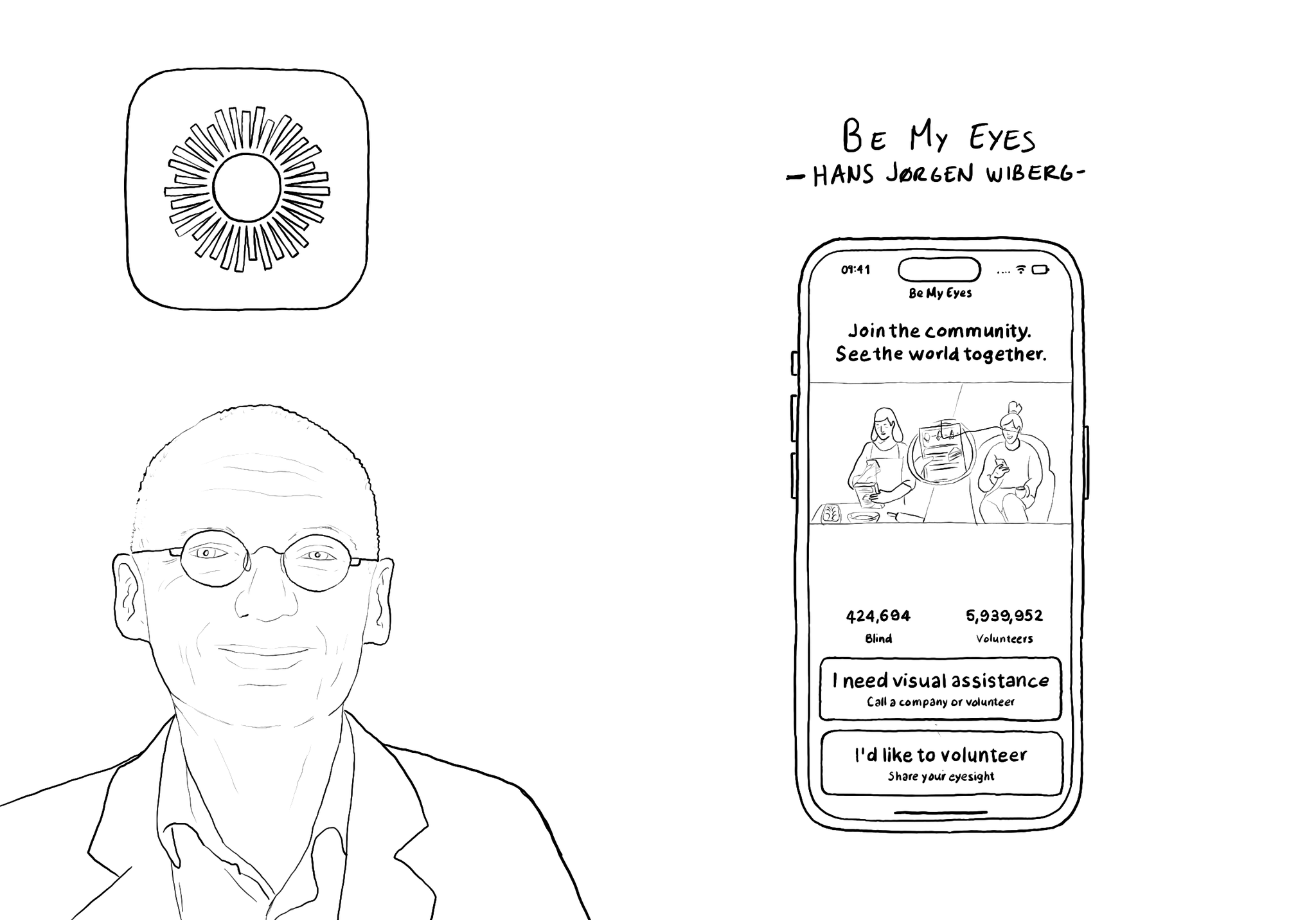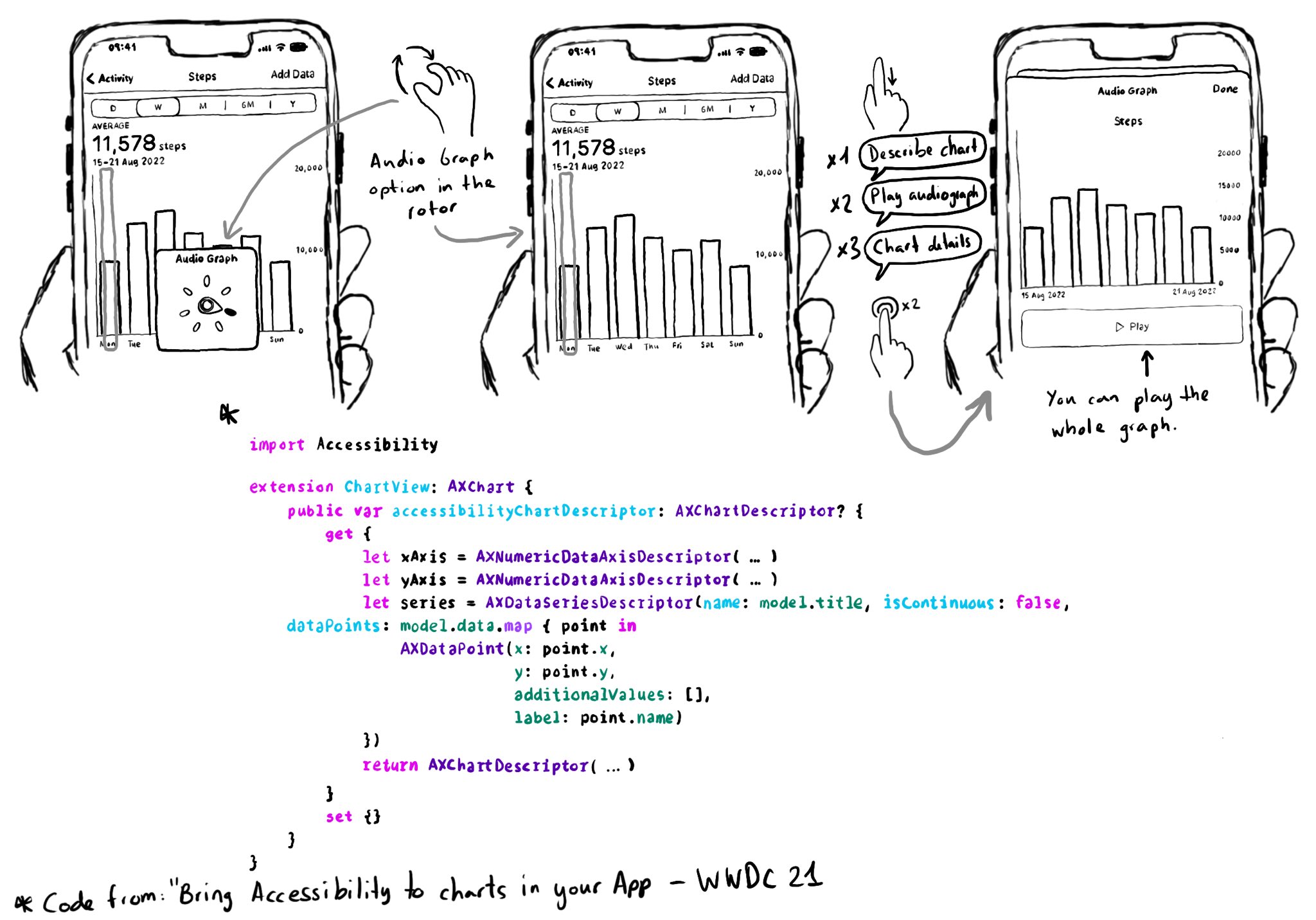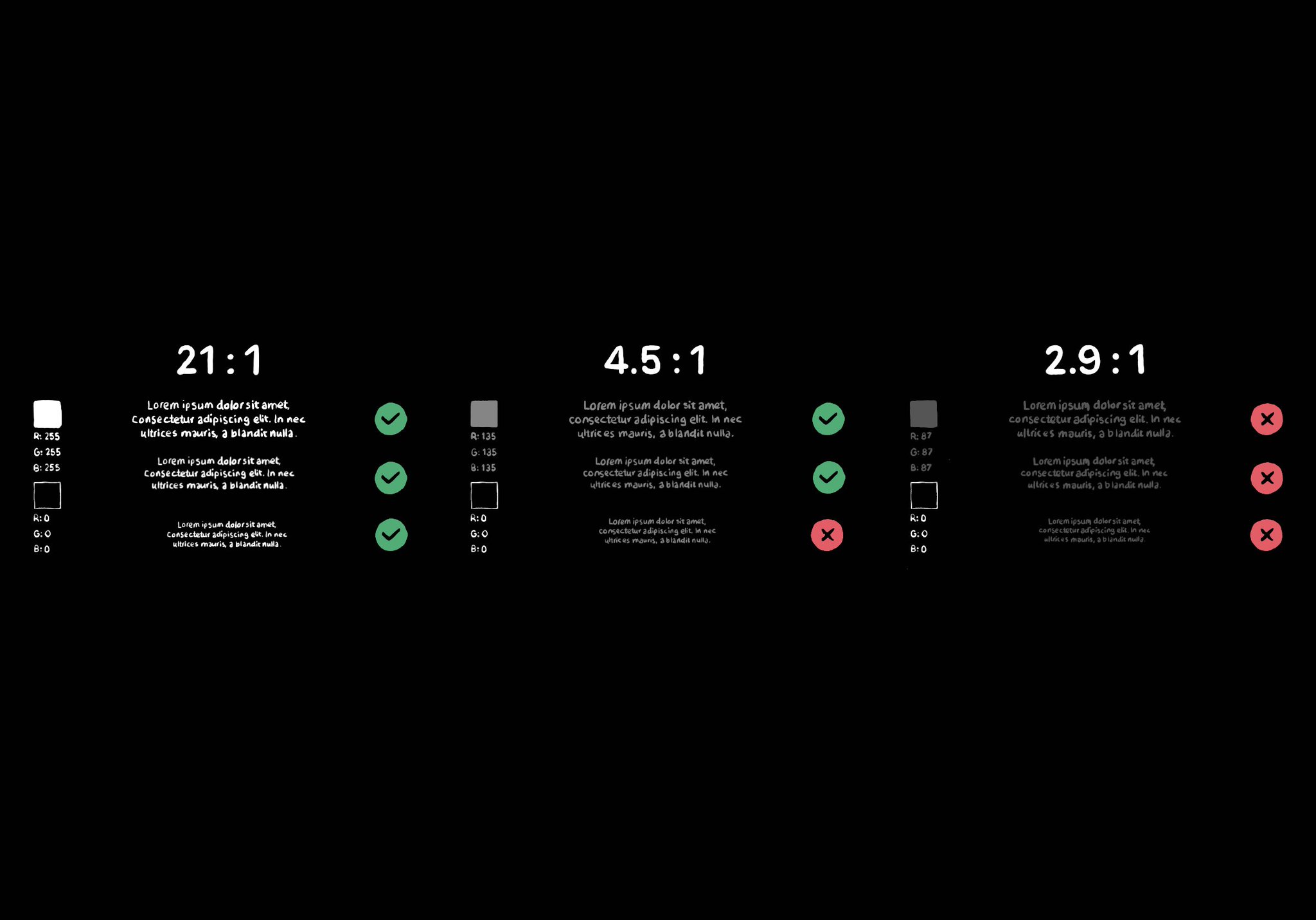Support both orientations, if possible. I know not even iOS itself does it, but it hasn't always been like that. You'll create a more robust UI that will be easier to port to iPadOS. And especially, don't force your users to rotate their devices.

You may also find interesting...

@BeMyEyes, founded by @hjwiberg, enables people who are blind and low vision to identify objects by pairing them with volunteers from around the world using their camera. Winner of an Apple Design Award 2021 for Social Impact.

Love this feature! Yahoo released the possibility to explore charts with audio, in the finance app, when using screen readers in 2019. You can do now something very similar since iOS 15. https://coolblindtech.com/yahoo-finance-app-makes-charts-accessible-to-blind-and-partially-sighted-users/ You can move your finger in the x-axes, and it will play a sound with a different pitch depending on the data in the y-axes, making it easier to identify trends in the graphs. You need to conform to the AXChart protocol by implementing the accessibilityChartDescriptor property. Documentation: https://developer.apple.com/documentation/accessibility/audio-graphs WWDC21 session: https://developer.apple.com/videos/play/wwdc2021/10122/

Color contrast between text and background is very important for perceivability. As colors come closer to each other, they’re more difficult to distinguish. Notice that colors that work well with big font sizes may not for smaller text.